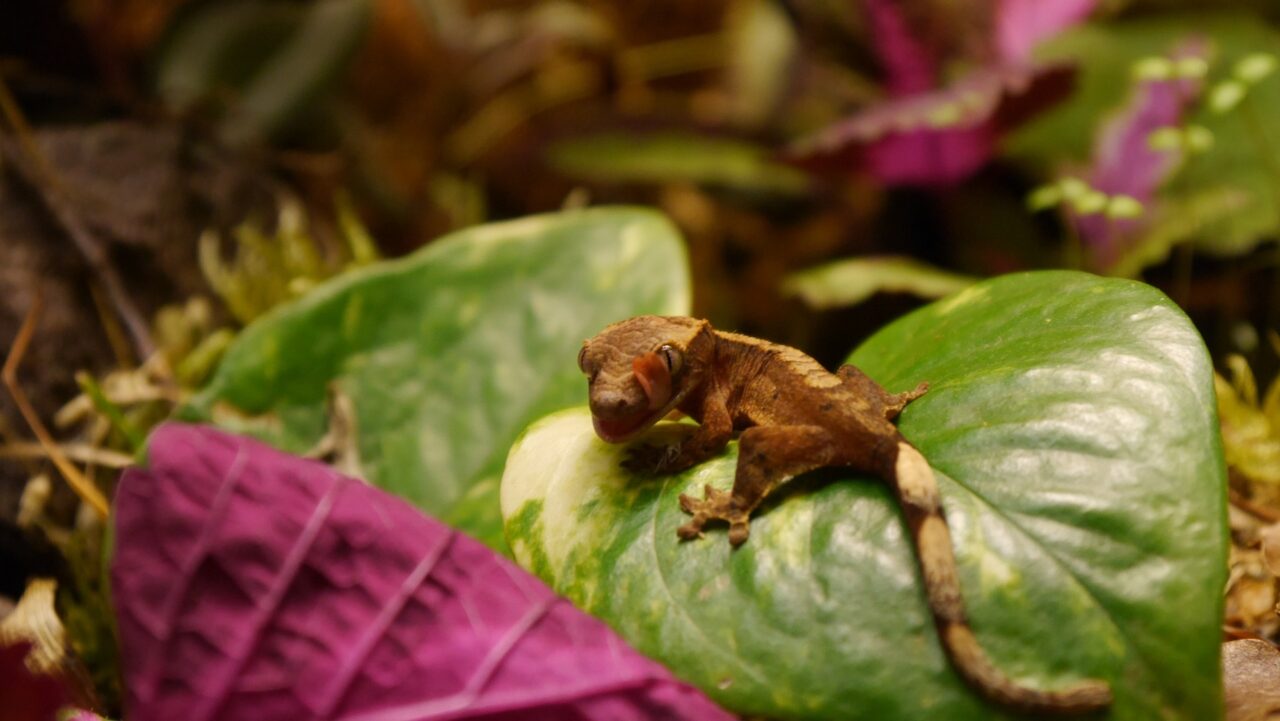Crested geckos are insectivores that live in forests, scrublands and rocky areas of New Caledonia. This is the natural crested gecko habitat. Crested geckos rely heavily on their vision, which is excellent. They are native to very hot and humid regions of lowland rainforest, where they make their homes in trees. Crested geckos hunt for food at night using their keen eyesight and sticky tongue.
They climb trees by using the pads on the underside of their feet or vertical surfaces with specialized adhesive structures located on their toes called lamellae. Crested Geckos have evolved to hide in crevices and holes, so it is important that they be kept in enclosures with plenty of places to hide so they feel secure.
Crested gecko terrarium
The crested gecko is a small and gentle creature. As such, it does not require a large cage or the complexity of branches and hides found in larger lizards’ habitats. To create the perfect habitat for your crested gecko, you should build a tank that measures approximately 24 by 12 by 12 inches.
The enclosure should be made of either glass or plastic, with a screen lid to allow air circulation and moisture collection. A substrate of loose paper towels or coconut fiber is best suited for your crested gecko.

Crested gecko feeding
The Crested Gecko is an omnivorous (they eat plants, insects and other small animals) and can be fed both live food as well as imitation diet. Adult Crested Geckos eat small crickets, Locusts, cockroaches and mealworms.
They prefer to have fresh food daily and should have dusted with calcium powder on a weekly basis to prevent Metabolic Bone Disease. Be sure to only provide food once per day. A good combination of methods will ensure your crested gecko stays healthy, happy and well-fed! Make sure to provide them with a good crested gecko food so that your crested gecko doesn’t starve itself.
Crested gecko humidity, light and temperature
It’s important to remember that crested geckos are from New Caledonia, and have adapted well to living in the humid, warm climate. Our crested gecko habitat must have an optimal temperature range of between 70°F – 80°F during the day and 50°F – 70°F at night; a realistic “day-night” cycle can be achieved by turning on your heat lamp or infrared heaters in the morning and evening, then keeping them off during the day.
Their UVB light should mimic the sun. Providing sufficient daytime levels of heat is especially important for egg laying females. Especially for them, the crested gecko habitat is very important. Crested geckos are most active during the day but do need some time in their hide box at night to regulate their body temperature and digest food.
Crested gecko handling
The crested gecko does not make a very good pet for people with children. It is best for beginner reptile owners who want to learn about the species, as well. Because of their size and shyness, handling is not required unless you want to remove it from its enclosure.
Crested geckos are very gentle and calm and like to huddle on a corner or branch of their cage. They can be picked up after they’ve been handled often, but they will try to bite/squirm if they don’t like being carried. It is important to support their head when holding them upright as a way to prevent unneccessary stress and injury.
conclusion
Crested Geckos are relatively easy to care for, especially once you have a good understanding of their needs. They can tolerate lower temperatures and do quite well in captivity if provided with the proper cage set up, heat, humidity and light requirements.